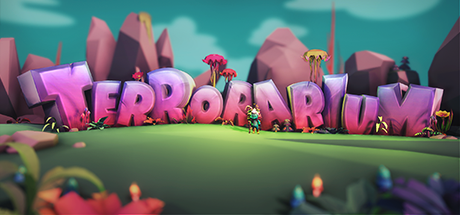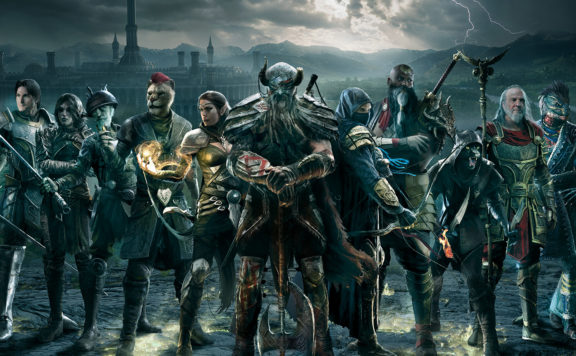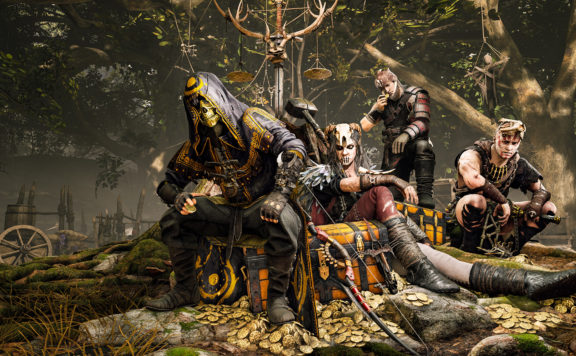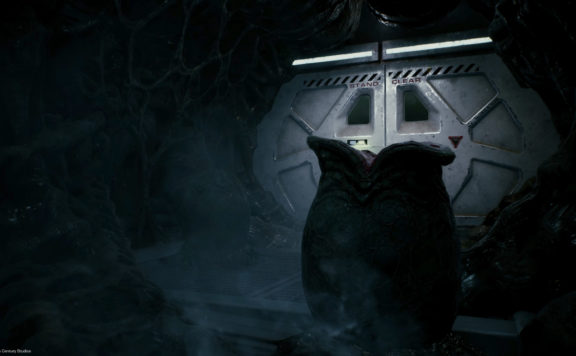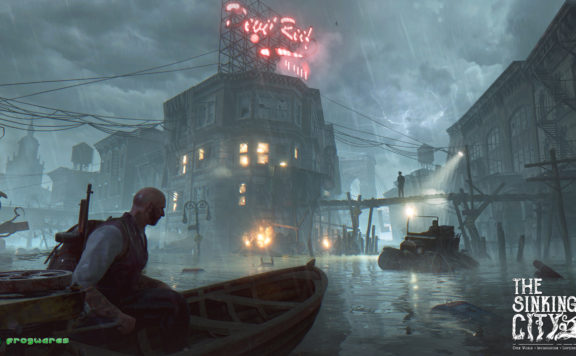The original Lords of the Fallen was released almost a decade ago, in the distant 2014. It was one of the first European Souls-like projects, developed by Deck13 and published by CI Games. The game turned out to be controversial and did not gain a massive popularity, but it was not forgotten regardless. This is where we find ourselves now, with the new Lords of the Fallen that is the centerpiece of today’s attention.
The developers from Hexworks took the old development of the first game and combined them with the gameplay of Dark Souls for their debut project. Did they succeed? In short, yes.
I am a big fan of the souls-like genre, and at the moment I have finished almost all mainstream titles, so I was looking eagerly towards the release of LotF. The trailers and developer diaries looked quite promising.
The protagonist travels between two worlds and defeats epic monsters while accompanied by a gorgeous soundtrack. The game got me from the very first video that you can find below, and my expectations were more than met. I will share more observations below but note that comparisons with projects of From Software are inevitable due to the specifics of the genre.
Let’s start with a short overview of the plot. A long time ago, an ancient demon god named Adyr was overthrown by the Judges, the greatest heroes of mankind. But gods are not stopped completely even by death, and so the Hallowed Sentinels order was founded to await Adyr’s return.
In order to suppress any manifestation of evil in the kingdom of Mournstead, they erected five lighthouses. However, due to the poisonous whispers of the seemingly dead god, even those who swore to oppose him were seduced to his side. The Guardians fell, their beacons were corrupted and the kingdom was thrown into chaos.
Later, the church of Orius, the god of light, discovered lanterns that enabled their bearers to cross the line between the worlds of the living and the dead, and decided to use them to confront Adyr. We play as one such Dark Crusader, a follower of the church of Orius, and a warrior that possesses this lamp. Our task is to restore the beacons and destroy Adyr once and for all.
Following the introduction, we are greeted with a character creation screen. There are 8 classes to choose from and one extra one in the Deluxe Edition of the game.
If you have played Dark Souls, the options will all be familiar to you. There is the classic warrior, rogue, mage, pyromancer and others, including the Condemned – a character with minimum level and equipment for those who want to create their unique build or test their prowess in combat.
Your equipment changes according to your class, and you don’t get an option to choose extra items. However, it is also largely unneeded as you have everything necessary for a comfortable start of your game.
Next comes the customization of your character’s appearance and, even though there aren’t dozens of various sliders and elements, creating a character that fits your taste will not be difficult.
Immediately after creating a character, players are introduced to basic mechanics of the game. Conveniently, these tips are all saved to the character’s inventory, and you can refer to them at any time if you encounter any difficulties.
The Lords of the Fallen battle system is very similar to what was introduced in Dark Souls, with the overall playstyle being closer to the first game that had players rely on planning their actions and studying the behavior patterns of enemies. The protagonist has light and strong attacks, blocks and evasions that turn into somersaults from double-tap.
However, the game also features “withered health”, something you might have encountered in Bloodborne. Blocking an attack temporarily takes away a portion of the character’s health that can be restored by damaging an enemy. Or lost completely if you expose yourself to a hit. This system allows players to choose a more aggressive battle style and preserve some healing items.
You can also parry enemy attacks. In that case, the “grey health” will not appear, and the enemy’s stamina scale will be lowered (displayed around the target marker). For ordinary opponents, usually it is enough to carry out a single parry to launch a powerful counterattack and guarantee a kill, but bosses will test you further.
Outside of parries, enemy stamina is also drained by normal hits, which is reminiscent of similar mechanics present in Sekiro: Shadows Die Twice. But the attack from the back carries out in a strange way: instead of a simple critical hit, you need to hold down the powerful attack, reset the enemy’s stamina and finish them off after. I still can’t get used to it and prefer to just beat my enemies to death.
In addition to the basic attacks, the character can use a variety of thrown weapons and spells. However, you will have to choose one: the spell catalyst and the various types of ammo occupy the same slot, so throwing fireballs and knives at the same time will not work.
Throwing weapons have a charge gauge that is spent depending on the weapon type and can be replenished mid-battle using a special consumable. Spells consume mana that can also be restored using consumables. You can prepare only two types of throwing weapons or four spells in advance.
Another helpful item that can be used in combat is the lantern. It can knock the soul out of your enemies, which briefly takes them out of the fight (also works for bosses), and also remove invincibility of the opponents that have an otherworldly parasite that grants such protection.
Overall, the battles feel familiar but fresh at the same time due to the innovations, but it might take some time to get used to the flow. It seems that the combat system was designed around 1 vs 1 duels, so when you are facing a large number of opponents it might be quite difficult. You will not be able to roll around like in Dark Souls 3. I’ll talk about opponents a little later, but for now let’s move onto one of the coolest mechanics of the game: moving between the worlds (Axium – the world of the living, and Umbral – the world of spirits).
As I mentioned before, the protagonist possesses a lantern that allows them to see the world of spirits and even visit it. The entire exploration mechanic works around that feature: can’t figure out where to go? Raise the lantern, perhaps there will be a passage nearby.
But as said by the classics “The way is shut. It was made by those who are Dead, and the Dead keep it, until the time comes. The way is shut.” There are often more dangers in Umbral than in the world of the living, and as long as the player has the lantern risen, these dangers can attack. So you must always be prepared to be sent back to the checkpoint and go through everything anew, probably cursing on the way.
The developers took this into account and made it so players can create temporary checkpoints in certain places to ease up the process of traversing locations. You can do so with the help of the Umbral Seedling that can be bought from merchants or occasionally found around. Just in case, you’d do well to keep a small supply with you at any time.
The world of Umbral also welcomes players with small riddles and puzzles that require the lantern. Sometimes you can push out a bridge or move a platform or open a door that is locked with several souls. To find them, you have to completely move into the spirit world by raising your lantern and pushing a button… or by dying. Yes, the lantern gives players a second life – upon dying in the physical world, the player is transferred to the world of spirits. Death in the world of spirits, however, is final and the player will get sent back to the closest checkpoint.
The world of spirits also features its own guardian that watches the player and after some time appears personally to put your soul to rest. Permanently. The guardian’s spawn timer is reflected by the white eye in the upper right corner, the edge of which gradually fills in until it turns red. Then Scarlet Shadow appears, disables the ability to use healing, slowly depletes HP and constantly stalks the player until they die or return to the world of the living.
There are special totems that can return players to the world of the living and break after doing so. The locations are well-built and thought out: there are always totems and checkpoints not too far from the most dangerous and mysterious areas. Additionally, players can find a map that will show the approximate direction you have to follow, so it’s difficult to get lost.
Sometimes you can run into traps in the form of mimics. The Lords of the Fallen’s mimics is something that will follow me into nightmares. They cannot be detected, cannot be avoided and will instantly kill you in the world of the living. They’re also creepy as hell.
It is quite interesting to explore locations, beautiful and varied as they are. Players will get to travel through rotting swamps, ruined villages, gloomy catacombs, snow-capped peaks, and majestic castles. The game tries to follow the Dark Souls 1 style where the locations change smoothly and have a lot of intersections, which creates a feeling of the overall integrity of the world.
But there is a drawback. Sometimes the types of enemies you encounter and the way they are scattered through the location almost force you to stop exploring and power-walk to the next checkpoint.
Speaking of checkpoints, there are two types: temporary, which I mentioned earlier, and permanent that look like statues with lanterns. You can increase the level of your character at any checkpoint, travel between the known locations, rest, restore your HP, resources and replenish enemies around the location. You can also join the multiplayer.
Multiplayer takes into account the shortcomings of a similar system from Dark Souls. Players no longer need to wait a while to connect with each other. At a checkpoint, you can call a friend, come to the aid of a random player or become the receiver of such help, or even join PvP.
Co-op play is convenient. If a player dies, they don’t get disconnected from the owner of the world, and the wonder can endlessly resurrect their partner. However, much like in Elden Ring, you also have a chance to run into an unfriendly player. It’s fun to fight against others, and good netcode allows you to fight fairly.
Sometimes you can run into red lanterns scattered around the locations. They will point you to the enemy that killed another player (the name of the victim will be shown above them). By avenging your fellow Dark Crusader, you will receive more currency and a useful consumable item for the merchant in the world of the dead.
Fighting monsters is as interesting as fighting other players. The local bestiary is diverse in both visuals and gameplay, with every type of enemy requiring its own approach to combat. In the world of the living, most of the opponents you face are people and demonic troops of Adyr, while the spirit world features terrible monsters. I’ve already mentioned mimics, but saber-wielding “dementors” and moth-men will also prove to be quite memorable.
Among the humanoid opponents, I was most impressed by cultists with spiked bells on their heads, berserkers with flaming axes, and knights.
Closer to the second half of the game, some of the encountered bosses will become ordinary enemies. However, it also feels like they don’t really change much in terms of characteristics. This can cause difficulties during your playthrough as facing against them as bosses meant a fair one-on-one combat. Meanwhile, as mini-bosses they are also surrounded by other mobs, sometimes in large numbers.
Dashing through a dangerous area is not prohibited: opponents don’t immediately react to players’ presence, and often quickly fall behind. So if you find yourself overwhelmed, you can always try to leg it out of there.
Here are a few examples of bosses that will later become ordinary opponents:
The most interesting part of any soulslike game, the reason for many broken gamepads and shattered nerves, are the bosses. The Lords of the Fallen take on bosses is fair and exciting, such opponents have clearly defined mechanics and good hitboxes. You won’t find any annoying mechanics in here (think about Margit from Elden Ring with his half-hour long sword swings), but sometimes I had questions about the arena in which you fight.
Locking players in a tiny 5×5 room with a large and fast enemy is a bad idea. There were also some relatively boring bosses as well. One of those spent about 5 minutes dashing around the arena non-stop before I managed to bring him down.
However, overall, I enjoyed the boss battles. After studying the enemy tactics and adapting to their behavior, players will get a spectacular battle and that indescribable feeling of victory over a strong opponent.As well as some unique gear!
In addition to the unique equipment, the game has an extensive arsenal of weapons and spells, most of which can be obtained by exploring the world or purchased from vendors.
All vendors are located in the local hub, but you will have to work hard to gain access to some of them. I was able to find a blacksmith and bring him to the hub around the 3rd hour of the game. By that point, the player should have enough resources and weapons to decide what to upgrade and continue playing with.
Upgrading your equipment works the same way as it does in Dark Souls. There are a few different types of ore that can be brought to a blacksmith and used to level up the characteristics of a certain piece of gear for a small fee.
You can also upgrade your lantern to make it more effective in combat. Much like weapons, the lantern has sockets that can use the runes you find on your journey, adding special properties.
Armor cannot be enhanced but it can be dyed, adding a certain degree of uniqueness to your character. Dye can be found when exploring the world or interacting with vendors.
In addition to vendors, you can run into various NPCs while running around the world, all of whom have their own story that will further unfold as you go through the main plot. By interacting with them, players learn more about both the characters themselves as well as the world at large.
Some of them can even be called upon to help you in battle against bosses if the goal of their journey is nearby. The characters’ routes are quite logical, and you are guaranteed not to miss the development of their stories if you carefully read and study the locations.
A bit about the technical part of the game. The Lords of the Fallen was created using Unreal Engine 5, and it looks very beautiful, delivering a stable frame rate with excellent environmental detail. It is very rare to encounter visual bugs in the form of broken textures. I also encountered a few gameplay-oriented bugs during my playthrough. Occasionally, enemies got stuck in the environment or refused to react to me.
To sum it up, Lords of the Fallen turned out to be an excellent entry into the soulslike genre, cleverly combining trusty mechanics from other projects while maintaining its own identity. The game offers a unique challenge due to its complexity but at the same time doesn’t forget about the newcomers, giving them ample time to adapt. LotF is a fun game to play, and I hope that developers continue to work on it.
- Note: The Steam key was provided for free for the purposes of this review
- Similar to: Dark Souls, Sekiro: Shadows Die Twice, Bloodborne


















